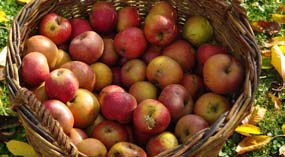The Festival of Lughnasa
A Study of the survival of the Celtic festival of the beginning of harvest
Máire MacNeill
Comhairle Bhéaloideas Éireann University College, Dublin 2008
Garland Sunday and Domhnach Chrom Dubh are two of the many names of a festival celebrated by Irish country
people at the end of July of the beginning of August. It marked the end of summer and the beginning of the
harvest season, and on that day the first meal of the year´s new food crop was eaten.
The chief custom was the resorting by the rural communities to certain heights or water-sides to spend the day
in festivity, sports and bilberry-picking. The custom existed also in the Isle of Man, Cornwall, Wales and in
the north of England. Formerly it must have been general in all Celtic lands for there is no doubt that it is
a survical of Lughnasa (Lughnasad), the Celtic festival held on the first of August.
In the description of the celebration much emerges of the old life of the countryside, and so the study is,
in part, a contribution to social history. Moreover, as the people preserved legends of the origin of the
festival and of the assembly-sites, it has been possible to show a correspondence with ancient mythology, as
expressed in Irish literature and in the cult-figures of Roman Gaul.
The dominant myth of the festival is brought to light.
A panorama, both extensive and detailed, is unfolded in the study, which reveals, inter alia, the nature of
Crom Dubh, shows that legends of Cú Chulainn, Saint Patrick, and Cornwall´s Jack the Tinkard
originate in tales of Lugh, suggests why Jephthah´s daughter was connected with the festival in the Isle of Man,
glances at the medieval cult of Saint James, and interprets anew the battle of Moytura and the Étain saga.
It shows a relationship between the old assembly of Tailtiu and the Croagh Patrick pilgrimage. It discusses Puck Fair.
It ranges from Lugudunum in first-century Gaul to Dún Lughaidh at the foot of Errigal. Figures from Irish
mythology, hagiography and history throng its pages.
Máire MacNeill (1904-1987) studied at University College Dublin, and was a graduate of the National University
of Ireland. From 1935 to 1949 she was a member of staff of the Irish Folklore Commission. She was a co-editor and
translator of Sí-Scéalta ó Thír Chonaill/Fairy legend from Donegal in
the Comhairle Bhéaloideas Éireann series Scríbhinní Béaloidis/Folklore Studies
and translator of Séamus Ó Duilearga´s Leadhar Sheáin Í Chonaill
- Seán O Conaill´s Book in the same series.
(Bovenstaande tekst komt van de achterkant van het boek)






